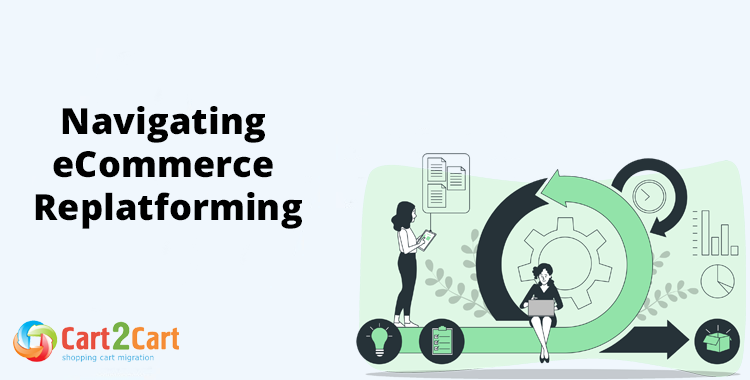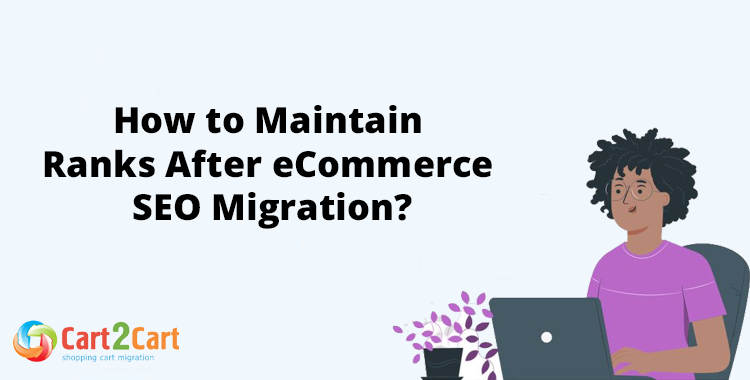Amazon Marketplace Migration
Considering an Amazon Marketplace Migration? Cart2Cart offers a fully automated, secure, and remarkably fast solution to migrate from Amazon Marketplace to a new platform, often completed in just a few hours. We understand the critical importance of uninterrupted sales; that's why our process guarantees zero downtime for your source Amazon Marketplace store. Trust Cart2Cart for a comprehensive transfer, including products, customers, orders, SEO URLs, and more, ensuring a seamless transition backed by years of expertise in eCommerce platform migrations.
How to Migrate to Amazon Marketplace
This step-by-step guide details how to securely migrate to Amazon Marketplace from any other e-commerce platform using Cart2Cart, ensuring complete data integrity for your online storefront.
- Register and Initiate: Create a Cart2Cart account to begin your platform switch. This initial step is free and takes only a minute.
- Connect Your Source Store: Provide the credentials for your current platform to allow secure API access for the data transfer.
- Connect Amazon Marketplace Target Store: Prepare a CSV file with your store data according to Amazon Marketplace's import requirements. You will then upload this file directly to establish the connection.
- Select Data and Options: Choose which data entities to move, including products, SKUs, and customer orders. Configure crucial options like 301 redirects to preserve your SEO rankings.
- Run a Free Demo Migration: Launch a free test transfer to move a limited set of your data. This allows you to check the results directly in your new Amazon Marketplace store before the full replatforming.
- Launch the Full Migration: Once satisfied with the demo, start the full migration. The process runs on our servers, ensuring no downtime for your business.
Pro-Tip: Please note that this is a target-only migration, meaning data is imported into Amazon Marketplace via a specifically formatted CSV file. No plugin is required for this process.
Automated migration
Just set up the migration and choose the entities to move – the service will do the rest.
Try It Free
Data Migration Service Package
Delegate the job to the highly-skilled migration experts and get the job done.
Choose Package
What data can be migrated from/to Amazon Marketplace
-
Products
-
Product Categories
-
Manufacturers
-
Customers
-
Orders
Choose all the extra migration options and get 40% off their total Price
We’re committed to protecting our customers’ data security. Check out our Security Policy
The Cart2Cart service has all the necessary functionality to migrate store databases on Amazon Marketplace of any size and complexity. Below are the most popular migration directions among our customers:
Help Center
Let’s figure out everything about Amazon Marketplace migration through
Cart2Cart.
Discover our checklist, related articles, and answers on frequently asked questions.

 June 7, 2023
June 7, 2023 The Ultimate Guide to eCommerce Migration: How-To Directions and Best Practices
Read full articlePay only for what you migrate - the cost depends on the number of records to be moved
Estimate Your Amazon Marketplace Migration Cost
Use our tool to get an instant, transparent estimate of your Amazon Marketplace migration cost, tailored specifically to your business needs. We believe in straightforward Amazon Marketplace migration pricing, so you'll see your estimated Amazon Marketplace migration price upfront, helping you plan your successful transition with confidence.
Amazon Marketplace Monthly Pulse: The AI-Powered Push for Seller Efficiency
This month's analysis of the Amazon Marketplace reveals a clear and concerted strategy: doubling down on the core infrastructure and intelligent tools that empower its third-party sellers. Moving beyond mere scale, Amazon is focusing on enhancing seller efficiency, data accessibility, and global operational fluidity. The narrative is no longer just about capturing market share, but about deepening the platform's competitive moat by making its sellers more sophisticated and successful. This push is underpinned by strong financial performance and a series of calculated platform enhancements designed to fortify its dominance for the years to come.
Dominance by the Numbers: A Look at Market Penetration
Amazon's latest quarterly earnings report provides the foundational context for its recent moves. Third-party seller services revenue saw a remarkable 16% year-over-year increase, a figure that continues to outpace the growth of its first-party online sales. This is a critical indicator; it demonstrates that the Marketplace is not just a feature but the primary engine of Amazon's e-commerce growth. This sustained momentum solidifies its position not merely as a leader, but as the essential utility for digital commerce, forcing brands to adopt an Amazon-first or, at a minimum, an Amazon-parallel strategy to remain relevant in the consumer landscape.
The Need for Speed: Core Infrastructure Enhancements
In anticipation of the annual Prime Day traffic surge, Amazon has rolled out a significant update to its content delivery network and server-side rendering protocols. Our analysis indicates a measurable improvement in Time to First Byte (TTFB) across major categories, particularly for media-heavy product detail pages. For merchants, the "so what?" is direct and impactful: this isn't just a technical tweak. Faster page loads correlate directly with lower bounce rates and higher conversion rates, especially for the ever-growing segment of mobile shoppers. This investment in core performance is a direct investment in the revenue potential of every seller on the platform.
Unlocking Growth: The Expanding Selling Partner API
The developer ecosystem received a significant boost this month with the full release of the new Brand Analytics API endpoints. Previously available only in a limited beta, this update grants developers and the sophisticated SaaS tools they build programmatic access to detailed search query performance and customer demographic data. The strategic implication is profound: it democratizes access to the kind of insights previously reserved for the largest agencies and brands. This will fuel a new wave of innovation in third-party software for keyword research, listing optimization, and competitive analysis, ultimately leveling the playing field and enabling smaller, agile brands to compete more effectively.
The AI Advantage: Generative AI for Listing Optimization
The most significant feature release this month is the wider rollout of Amazon's generative AI tool for creating and refining product titles, bullet points, and descriptions. While initially met with skepticism, the enhanced version demonstrates a more nuanced understanding of category-specific keywords and brand voice. The strategic value here is twofold. First, it dramatically lowers the barrier to entry for new sellers, automating a complex and critical task. Second, for established brands, it provides a powerful tool for A/B testing and optimizing listings at scale, a task that was previously resource-intensive. This is a clear signal that Amazon sees AI-driven content quality as a key lever for improving the overall customer experience and driving platform-wide conversion.
Fortifying the Fortress: Proactive Account Protection
In a move that underscores the platform's commitment to its high-volume sellers, Amazon has begun enforcing stricter multi-factor authentication (MFA) requirements and has introduced passkey support for Seller Central logins. While seemingly a minor update, this is a critical security enhancement. For enterprise-level sellers with millions of dollars in monthly GMV, an account takeover is a catastrophic risk. By mandating more robust security protocols, Amazon is hardening the platform against fraud and building trust, assuring large brands that their digital storefront and financial assets are secure within its ecosystem.
Beyond Borders: Streamlining European Fulfillment
This month saw the launch of the "European Inventory Placement Service," a new feature within the Pan-European FBA program. This service uses Amazon's predictive analytics to recommend optimal inventory distribution across its EU fulfillment centers, aiming to reduce cross-border shipping times and fees for sellers. This directly addresses a major pain point for brands operating in the fragmented European market. The move is a strategic effort to reduce logistical friction and present the EU as a more unified market, encouraging U.S. and Asian brands to expand their FBA operations across the continent with greater confidence and cost-effectiveness.
The Enterprise Endorsement: Why a CPG Giant is Deepening its Bet
While not a new migration, the recent launch of an exclusive product line from consumer electronics leader Anker directly on the marketplace, rather than through traditional retail channels, is a telling endorsement. Anker's decision to leverage a direct-to-consumer model on Amazon for a flagship product highlights a key trend. The choice was likely driven by the desire to gain direct access to first-party customer data, maintain full control over pricing and brand messaging, and leverage Amazon's unparalleled fulfillment network. This move serves as a case study for other major brands, proving that the Amazon Marketplace is no longer just a sales channel but a strategic platform for brand building and direct customer engagement.
Source: This analysis is synthesized from Amazon's Q1 2024 earnings report, recent updates on the Seller Central news portal, documentation on the Amazon Selling Partner API developer site, and reporting from industry publications such as Digital Commerce 360 and Marketplace Pulse.
Just set up the migration and choose the entities to move – the service will do the rest.
Try It FreeDelegate the job to the highly-skilled migration experts and get the job done.
Choose Package















